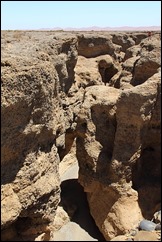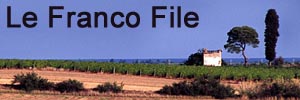Flying into Alicante airport, that’s where we pick up our rental cars. Being at an airport, the rental offices are generally open and, with the volume of business, there are generally quite a few cars. One lesson I’ve learnt is to avoid the ever so nasty Fiat 500L. Actually, if you follow Franco’s rule, you’ll avoid absolutely anything Italian. Another automotive Italian disaster was the Lancia Ypsilon that we suffered, once. Less disastrous but not great was a Fiat Tipo. We have had a Skoda, which was adequate in an unscintillating way, and a brief foray into something French that I think was a Renault which, being a diesel, at least had some punch, albeit a little rough and ready,
This time, I thought we’d lucked out as we were handed the keys to a brand-spanking-new Ford Focus, in all its shiny black glory. Being utterly pristine, I bit the bullet and went for the full insurance. I climbed in and soon found pretty conventional controls to adjust the seat, steering column and mirrors. Joy of joys, you actually had to start it with the key. How terribly backward, Henry. 😉 Adjustments complete, we drove off, gingerly at first but with the growing confidence that convention brings.
I soon began to feel at home. It sounded a little gruff, however, and I began suspecting a 3-cylinder engine. It was spritely, though, and certainly didn’t labour when it came to inclines. Francine looked at our rental agreement. Yikes! This is only a 1-litre engine. This was one of Ford’s new EcoBoost jobs. It’s a petrol engine which, although of low capacity, pulled smoothly from ~1500 revs, more like a diesel than a petrol. It flew up hills and jumped forwards when I asked it too. I am not readily impressed but I loved it; it was a joy to drive.
It continued to be such a joy to drive that on New Year’s Day, I dropped my guard. I also dropped my right hand a little too much and smacked a kerb stone on the way into Benissa. We had been planning to head for Xabìa/Javéa but our plans were brought to an abrupt halt when the car began complaining of low tyre pressure. “Bother!”, I said, or words to that effect. There was a handy piece of rough ground onto which I pulled. Sure enough, a distressing hiss of escaping air and a rapidly deflating front near side tyre told all that was necessary; I’d done some real damage, probably unseated the tyre from the rim.
In the boot, mercifully, I found an emergency spare. I managed to get to grips with an unfamiliar jacking system and changed the wheel. We returned home to call the rental company.
New Year’s Day is not a great time to have a mechanical mishap. They confirmed that I was at least still mobile – spare wheel on car – and suggested that I present myself at their nearest facility the next day when life would begin returning to normal. Their nearest facility was in Benidorm. Arghh!
We’ve been studiously avoiding Benidorm, which is about 30 minutes south. Now, however, was an emergency and our elderly satnav found the rental office without too much trouble, short of trying to send me the wrong way down a one-way street. Parking was more problematic but we eventually worked out how to get into the underground garage area. We were told to dangle around for an hour while they tried to find me a suitable replacement vehicle. The term “try” did not inspire confidence and I had frightening visions of getting something Italian.
The offices were near the front so we spent our hour exploring. Here is how to get a feel for the reality that is Benidorm.
- Imagine how bad you THINK Benidorm is
- Now double it.
- OK, double it again [redouble, in Bridge-speak].
You’re getting the idea. I’ll let a few pictures do the describing for me.




The last of those pictures shows our view from our coffee table. Great, isn’t it?
Finally we returned and got our replacement car. Whilst I was mightily relieved that it was another Ford Focus, this was a conventional 1.6 litre petrol job with, I feel, a little less grunt that the 1-litre EcoBoost job. OK, I admit it, I’ve become a Ford convert.
 Treating our replacement car with constant respect, we dawdled our way back to Jalón and celebrated with lunch out. Francine went for the squid rings and chips whilst I, feeling very gloomy about having been such a silly-billy, went for some comfort food in the form of a handmade burger, complete with bacon, tomato, and egg. We each had 2 glasses of rosado and a coffee to finish. Total bill, 21€. Ridiculous!
Treating our replacement car with constant respect, we dawdled our way back to Jalón and celebrated with lunch out. Francine went for the squid rings and chips whilst I, feeling very gloomy about having been such a silly-billy, went for some comfort food in the form of a handmade burger, complete with bacon, tomato, and egg. We each had 2 glasses of rosado and a coffee to finish. Total bill, 21€. Ridiculous!
Now to see if we can get back to normality.
 The mention of water pools did it.
The mention of water pools did it.

























Recent Comments